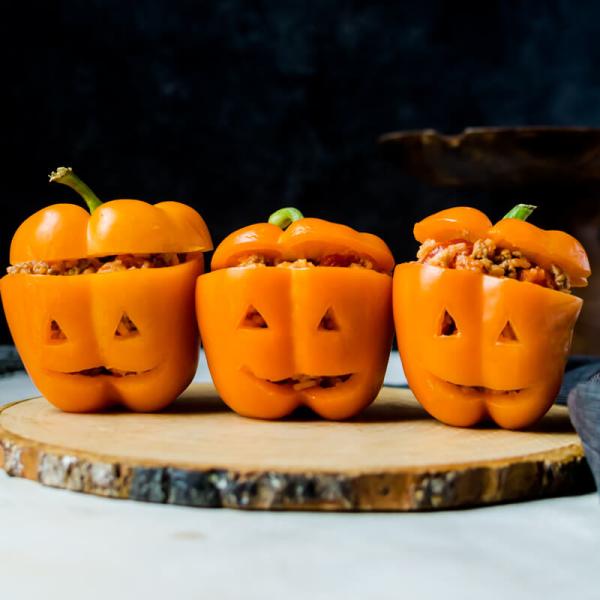How to Have a Happy "Ecoween" and Go Green This October
- October 10 2018
- 3 min read
How to Have a Happy "Ecoween" and Go Green This October

It's October tenth. This means that spooky season has begun and everyone is thinking about what to do for Halloween.
Whether you celebrate spooky Halloween, scary Halloween, fun Halloween, or a combination of the three, Halloween traditions were invented before the environment was a major concern. Thankfully, there are ways to change that.
Here are five tips on having a happy "ecoween" this year and not losing out on the fun while trying to keep things green.
1. Costumes
Unfortunately, the standard for Halloween costumes has become cheesy knock offs and obvious rip offs that come in plastic packages and are shipped from halfway around the world. This creates waste of multiple kinds. The package encourages the use of single-use plastic, the shipping creates pollution, and the costume itself may include non recyclable items that fall out of fashion as the character loses popularity.
When planning out your costume, try to think of characters that don't require many parts. Maybe your favorite movie's heroine is known for her quirky fashion sense, or maybe you watch a TV show that includes someone with relatively normal style but really funny hair. Costumes like these can be made using what's already in your closet. Don't already own the pieces? Your local thrift store is a great place for upcycling.
Even more involved costumes such as Hermione Granger from Harry Potter can be done with a low carbon footprint. You can pick up a robe at your local thrift store and from there all it takes is some crafting. Parents can even get kids involved in the design process.
You should save these costumes. By creating what's known as a "closet cosplay," when you can't think of something next year, all you have to do is make sure the right items are clean and still fit.
2. Candy
Isn't the best part of Halloween the candy? I mean, what's Halloween without some trick-or-treating?!
Alas, unless you have a bunch of lime skittles in your hand, candy isn't very green. There are probably candy wrappers from childhood Halloweens long since past still sitting in landfills waiting to break down. When they do, the byproducts in the dyes and wrappers leach into the soil we grow food in and the water we drink.
To reduce both the environmental and nutritional impact Halloween has on children everywhere, here are some tips:
- Make treats yourself.
Not only is making treats yourself good for the environment because it cuts down on the waste created by fun-size candy bars, but if you know someone with food allergies, you can guarantee that there's a safe, sweet treat for them.
- Opt for small gifts instead of candy.
You could purchase low cost craft kits at your local art supply store or Michael's. Or you can go to the dollar store and purchase a bunch of silly items, such as mood rings and tiny plastic dinosaurs, to hand out. You could even give away small crafts made in advance.
- If you just can't stay away from store bought candy, opt for fair-trade chocolate.
Fair-trade items such as coffee and beauty product ingredients are produced primarily in developing nations. By having a fair-trade certification, the consumer is aware of the company's commitment to fair wages and working conditions for all producers and exporters, from the farmer all the way to the warehouse.
3. Candy Carriers
This section isn't about candy itself, but what the candy is stored in while walking around the neighborhood.
Is a bag best? Reusable bags are better for the environment than plastic bags. Plastic bags are damaging to our waterways, and both marinelife and birds; become quite heavy very quickly; and often break when experiencing too much weight.
King size pillow cases are also a great alternative. They are sized to hold plenty of candy and they are washable so that you can reuse them.
But does your child just have to have that plastic pumpkin bucket? Put it on a shelf in the closet and save it for next year. Some plastic is reusable.
4. Decorations
Like costumes, most decorations are made out of cheap, low quality plastic. They often get thrown out after the holiday is over and are not reused.
This is an area where crafty people shine! You can use items such as mason jars, chicken wire, paint, ribbon, anything that you can find around the house. By reusing these items, you can spook up your house into the best haunted mansion on the block while keeping your carbon footprint relatively low.
Any items made out of stronger plastic, intact foam items, unripped window clings, etc. should be saved and used the next year.
Purchase some seed paper shapes from Custom Earth Promos and design the spookiest scene you can.
5. Pumpkins
Along with costumes and candy, pumpkins are one of the most beloved Halloween items and one of the most fun decorations.
Jack-O-Lanterns are usually sprayed with heavy duty pesticides to make them large enough in time, and in order to get them to consumers, they are shipped long distances. To combat this, the solution is to try to buy locally grown, organic pumpkins.
Don't throw away the insides when carving that pumpkin. if thrown away, all that rotting pumpkin just contributes to the growing problem of food waste. For those who enjoy cooking, there are plenty of recipes that can be made with fresh pumpkin. Once it starts to turn, the flesh can also be cooked with before it starts to rot.
If you're worried about your footprint this "ecoween", there are plenty of other things that can also be done to ensure that your Halloween is a green as a zombie's skin and ghost's glow.
Gain access to Orders, Tracking, Custom Options and Much More!